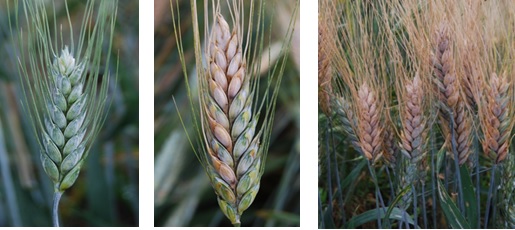Genomics-Assisted Breeding for Fusarium Head Blight (FHB) Resistance in the Cereal Durum wheat
SUPERVISOR: Hermann BÜRSTMAYR
PROJECT ASSIGNED TO: Jedi Joy BELMONTE MAHILUM
Durum wheat is a tetraploid wheat species that has high gluten strength and protein content and is popular for the production of pasta. Despite its economic importance, durum wheat is found to be susceptible to Fusarium Head Blight (FHB). FHB is a destructive fungal disease to cereals affecting both grain yield and end-user quality traits. Moreover, the fungi produce mycotoxins that pose threat to human and animal health, hence there is the need to develop cultivars that are resistant to this disease. Resistance breeding is the most efficient and sustainable method in controlling FHB and to increase crop productivity.
To date, there is no durum wheat variety that is highly resistant to FHB. Hence, using advanced genomics tools will hasten the long breeding cycle for the development of resistant and high-yielding durum wheat varieties. FHB resistance has been found to be associated with several plant developmental and morphological traits particularly plant height, flowering date, spike architecture and flowering morphology i.e. the extent of retained anthers which need to be considered in the resistance selection Analysing the genetic control of these traits and exploiting the associations of the genes governing FHB resistance and morphological traits through genomics-assisted breeding provides a crucial importance to complement the selection process for FHB resistance.
This study aims at broadening the spectrum of resistance against FHB by introgression of resistance alleles in durum wheat from relatives with the aid of genomics-assisted breeding. Conduct disease screenings for the selection of putative resistant genotypes against FHB. Analyze the effect of anther retention on the level of disease resistance against FHB. And determine the genetic control of FHB resistance and anther retention and their association. Two durum wheat populations will be used: 1) a collection of 140 cultivars and breeding lines from Austria, France, Germany, Italy, and Spain and 2) 460 lines derived from crosses of Capdur and moderately FHB resistant experimental lines with FHB resistance donors: Triticum aestivum, Triticum dicoccum and Triticum dicoccoides. Data generated from phenotyping and genotyping will be analyzed and utilized for genome-wide association mapping to identify quantitative trait loci (QTL) for resistance against FHB and other relevant traits.

Figure 1: Comparison between (a) healthy and (b,c) with Fusarium head blight symptoms on durum wheat heads (photo: BOKU, H. Buerstmayr)
